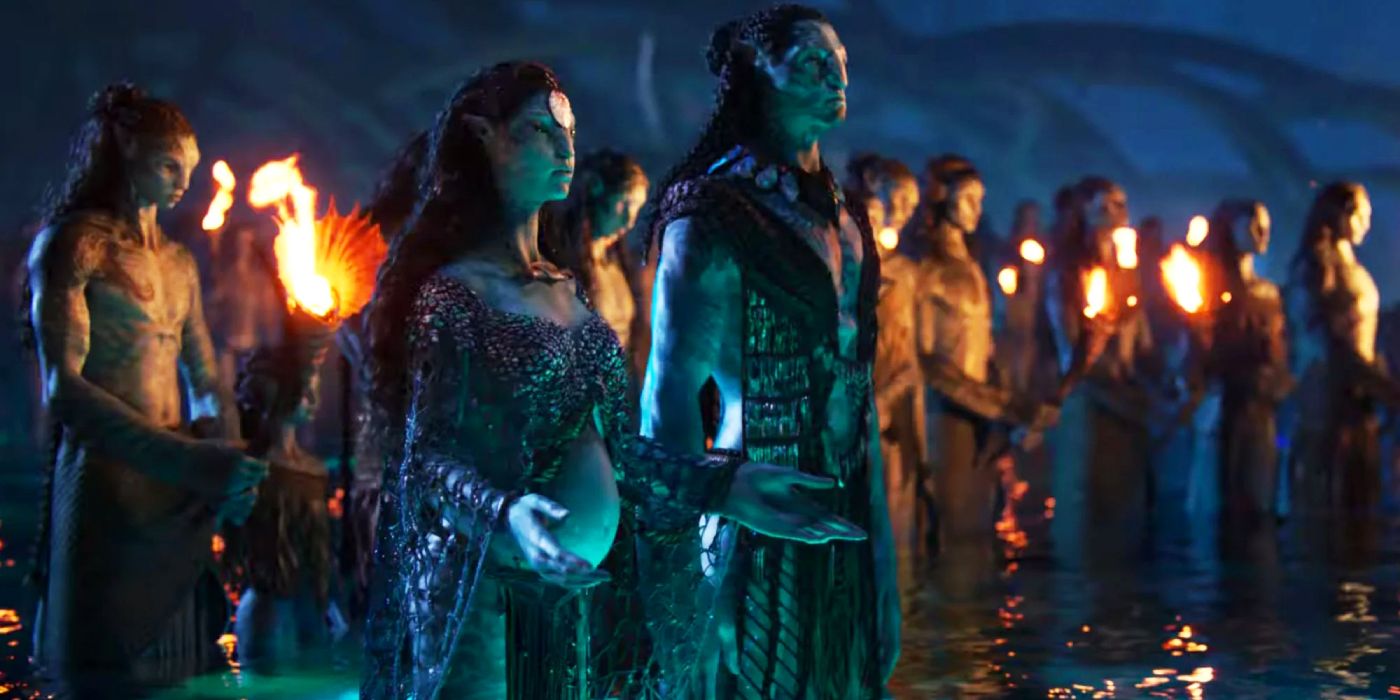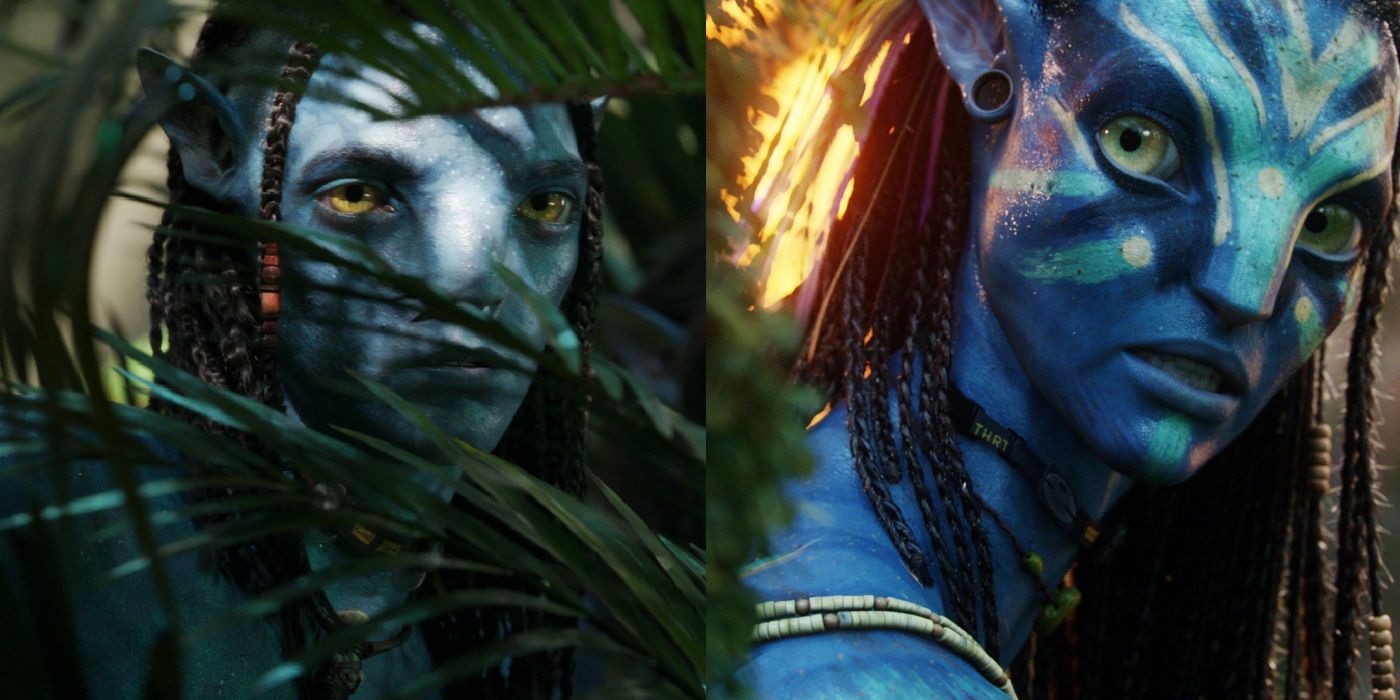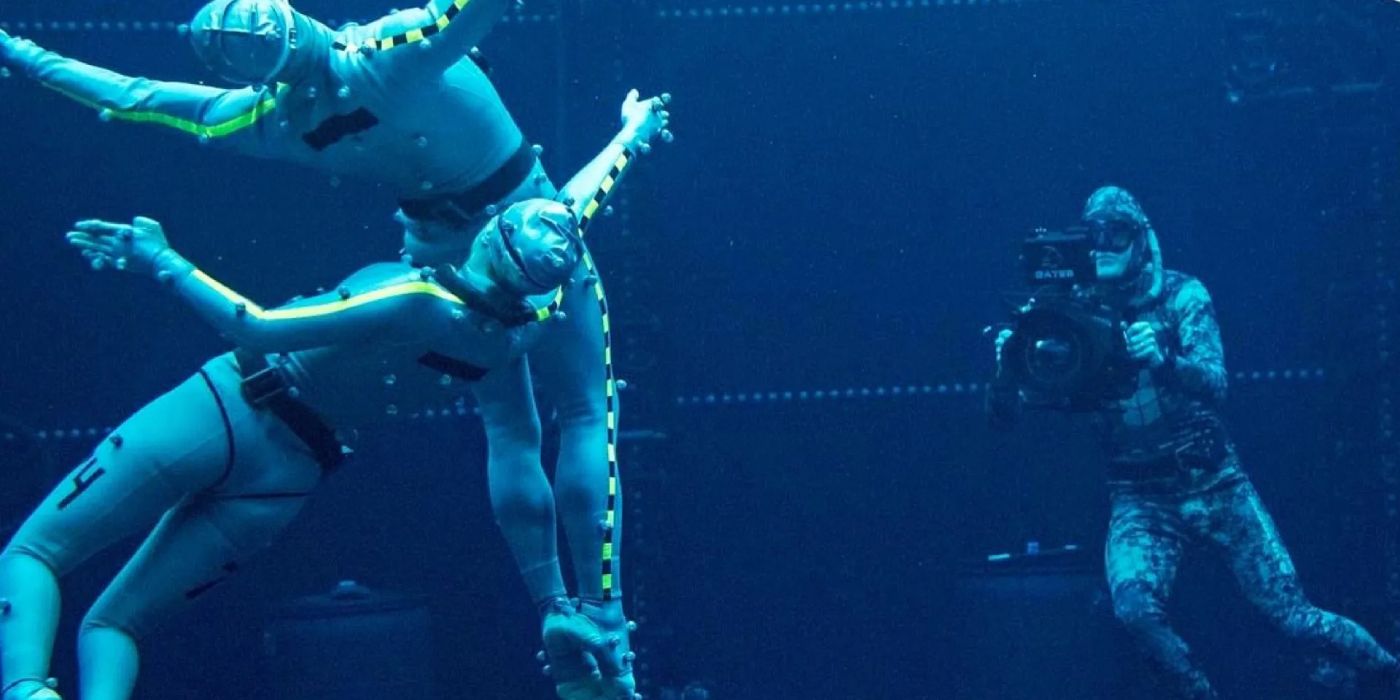Avatar: The Way of Water is one of the most, if not the most, anticipated movies of the year. Set years after the events of the first movie, The Way of Water will follow Jake Sully and his partner Neytiri as they attempt to protect their new family from the Resources Development Administration (RDA), which still seeks to control the planet of Pandora. Sam Worthington and Zoe Saldaña are only two of the returning cast, which also includes Stephen Lang as the villainous Colonel Quaritch and Sigourney Weaver as Grace Augustine.
It has been 11 years since the first Avatar movie took the world by storm and set a precedent for sci-fi cinema and CGI in movies. The concept for Avatar began with James Cameron's treatment for the movie back in 1994, but Cameron put the project on hold when he realized the technology at the time wouldn't do the story justice. But, when Avatar was released in 2009, it enjoyed massive success and not only became the highest-grossing movie of all time but won three Academy Awards for Best Art Direction, Best Cinematography, and Best Visual Effects.
So, how does the first movie compare to Avatar: The Way of Water? After the trailer dropped on May 9 this year, garnering over 22 million views, fans were quick to compare the look of both movies and how far technology has come. While many disgruntled viewers claimed Avatar and the new movie looked the same, eagle-eyed experts and fans observed the key differences. Indeed, the team on Avatar: The Way of Water managed to capture the essence and feel of the first movie but have made key upgrades to every aspect of CGI and motion capture used throughout the film.
Most notably, the lighting is vastly different between the two movies, as pictured above. Sam Gorski of Corridor Digital noted the complexities of the sub-surface scattering seen in the trailer, which adds depth and realism to the shot. Sub-surface scattering is a vital aspect of CGI lighting and occurs when light penetrates through the surface of a translucent object (such as an eyeball, water, or glass) and is bounced back out. Water simulations, too, are absolutely stunning in the Avatar 2 trailer and so realistic that many viewers believed they had filmed the shots practically.
Innovations for Avatar were numerous, unsurprising considering CGI was still relatively new back in 2009. Wētā pioneered new systems for lighting massive areas like Pandora's jungle, in addition to an improved method of capturing facial expressions. Actors wore skull caps fitted with a tiny camera positioned in front of the actors' faces, which were spotted with dots to allow for computers to translate their facial expressions and eye movements. Despite these groundbreaking leaps, it is clear that Avatar looks much flatter than Avatar 2, with a shallower depth of field and generally darker scenes that hide much of the background effects. The Way of Water is not only on a larger scale but has deep, luxurious shots and sweeping landscapes, which look much more tangible than in the first movie.
Wētā FX, the world-class New Zealand visual effects company known for the likes of The Lord of the Rings and the Planet of the Apes movies, is working closely with Cameron to bring Pandora to life. Having won an Oscar for its work with Cameron on the first Avatar movie, it's unsurprising that the company has continued to make leaps and bounds in filmmaking technology. In true Wētā style, the company coded its own simulations to allow for the creation of the water-world in Avatar: The Way of Water.
As pictured above, the filmmakers have pioneered underwater motion capture to truly echo the movements of the Na'vi swimming. Moreover, Wētā has also filed several new water simulation patents, demonstrating that it is trailblazing through the world of cinematic CGI. Another renowned visual effects company, Industrial Light & Magic, worked alongside Weta on the first Avatar movie to create the battle sequences. ILM was also responsible for the film's specialized vehicles and, like Wētā did with motion capture, devised a new way to make CGI explosions. Hopefully, ILM will team up with Wētā and Cameron again for the new Avatar movies.
Avatar: The Way of Water is set to release on Dec.16.



